The following illustration shows a trumpet mouthpiece in section. Some of the designations given are old Viennese designations which we would like to retain. The designations apply to mouthpieces of all instruments.
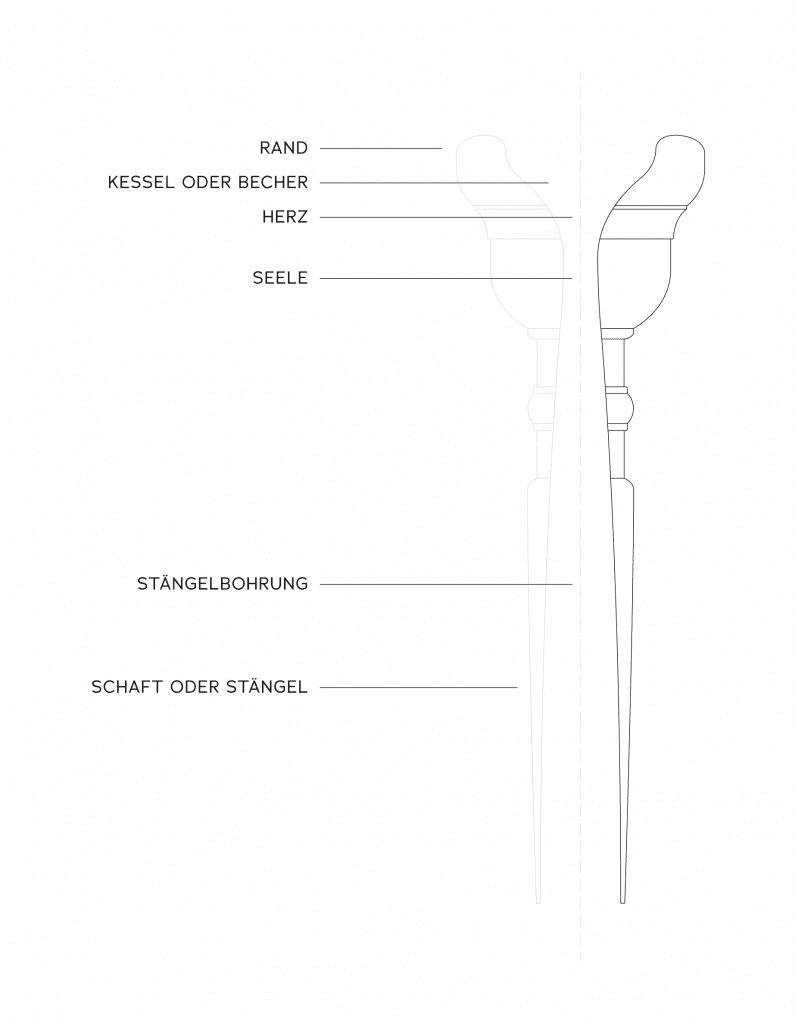
The rims
The rim shape of the mouthpiece should support the lip vibrations. Accordingly, it should be neither too wide (blocking) nor too narrow (cutting). The good rim should allow fatigue-free playing even over longer periods of time. Extreme shapes should be avoided (sloping steeply inwards or outwards, too wide or too narrow). It is our special concern to make a well-fitting rim for the musician. Who else but the musician himself can judge which rim shape is to be classified as optimal. For this reason, we are constantly expanding our range of rims.
These rims fit the G series cup exactly:
G-rim: Old Viennese edge shape without extremes. Distinctive inner edge, sloping rather flat towards the outside. Offers good endurance.
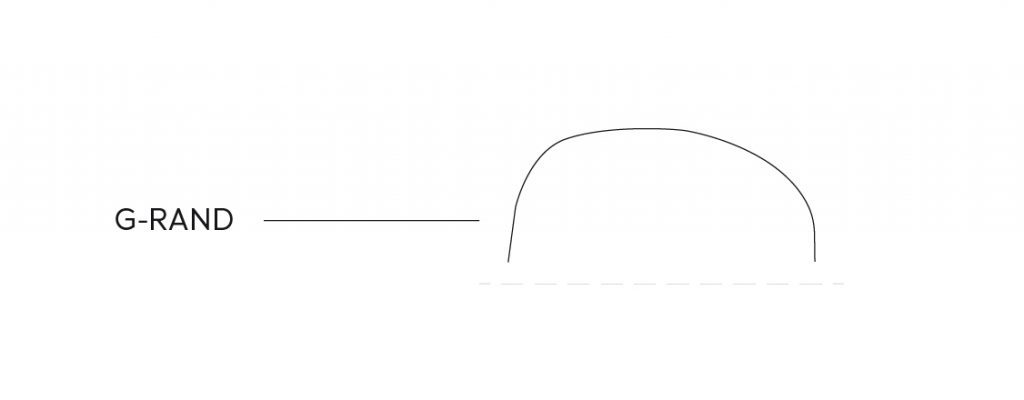
L rim: Rim shape by Professor Levora, soloist with the Vienna Philharmonic in the 1960s. Less inner edge like rim G, rounder and more steeply sloping towards the outside. Offers very good embouchure.

H rim: This rim shape is modelled on the widely used 1½ C mouthpiece. Narrow rim for high mobility when playing.

V-rim: Corresponds to the 1¼ C rim shape. We thus offer the possibility of switching from a series mouthpiece to our modular system without major conversion problems.
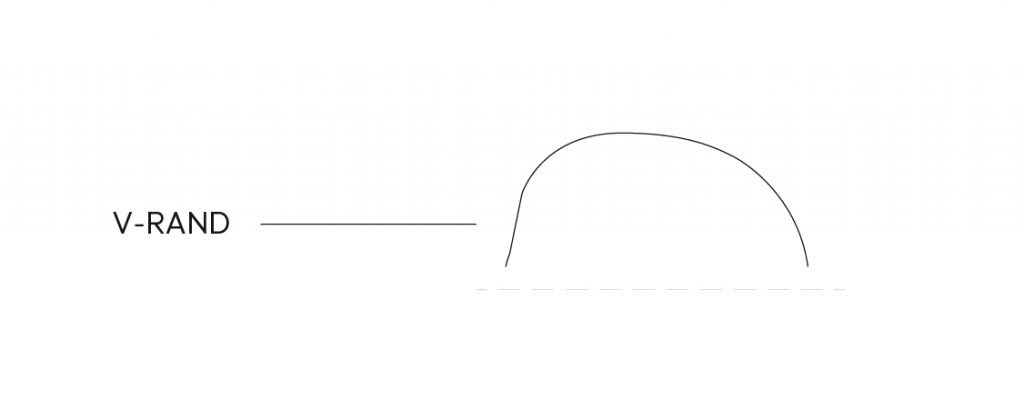
K-rim: The inner edge corresponds to rim G, extended to 28.0mm on the outside. For more endurance, without significant loss of flexibility of a normal width rim. Recommended for shallow cup.
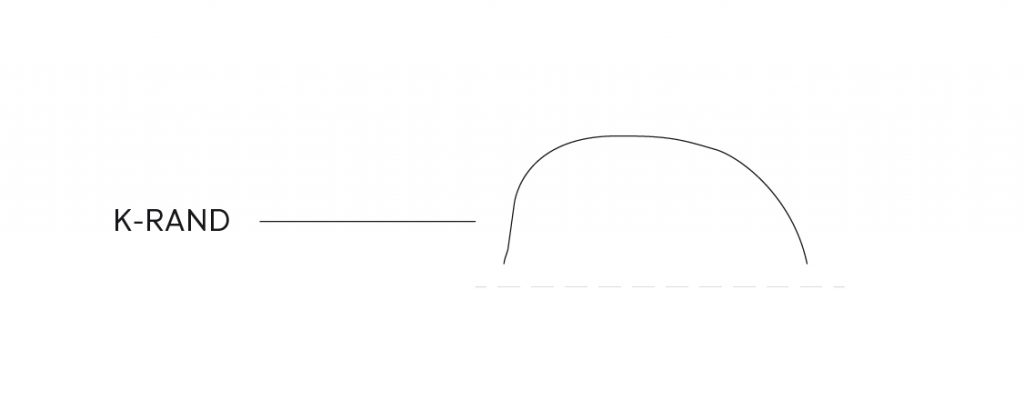
W rim: The inner edge corresponds to rim G. The outer diameter is 29.0mm. Intended for fatigue-free play over long periods. Recommended for shallow cup.

However, these rim shapes are only a small part of our variety. We have many special shapes in our range. You can find a complete overview of our rims for trumpet mouthpieces in the following document.
The cup
The shape of the cup plays an important role in achieving a desired timbre or in helping to give the playing the desired expression. It is still true that a large cup contributes more to a beautiful round tone than a shallow one. But in the end, it is up to the player alone to decide which type of cup makes him feel comfortable in his playing.
The designation of the cup was partly taken over or derived from existing complete mouthpieces. The constant additions and further developments often result in confusing designations, mostly due to the superimposition or variation of several cup shapes.
The bore of the cup must be 3.80mm or smaller in the modular system so that all shank variants fit. If special drillings are required, we can of course make them individually.
The most common rims can be fitted into our system. For certain rims whose inside widths are more extreme, the cup can be specially adapted or the cup of the special model series fit.
The depth of the cup influences both the sound and the ease of playing. A cup that is too deep produces a beautiful sound, but as soon as the wind player is overburdened by the chosen size, not only endurance but also musicality falls by the wayside. A lightness of playing leaves the musician room for musical development.
The modular cup:
G1 cup: Going back to an old Viennese mouthpiece of the Vienna Philharmonic Orchestra. Starting point of all G mouthpieces. Large tonal volume and sonorous sound.
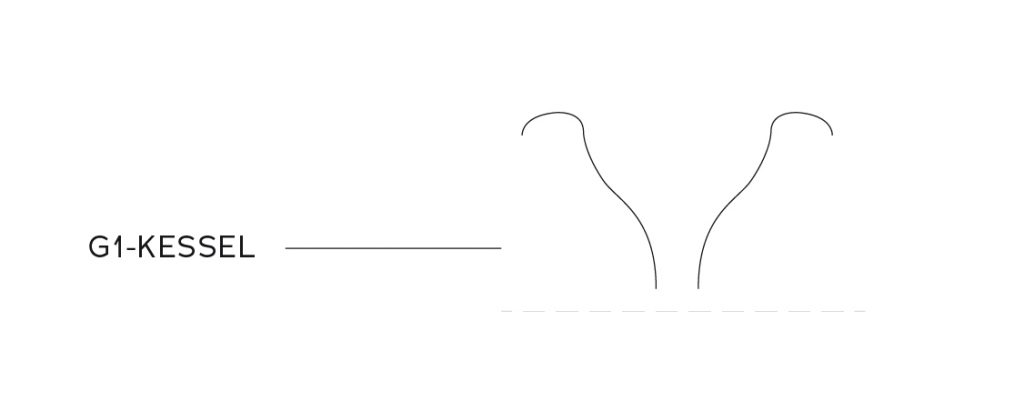
G2 cup: Shallower like G1, excellent sound quality and intonation ability. Most popular orchestra mouthpiece.
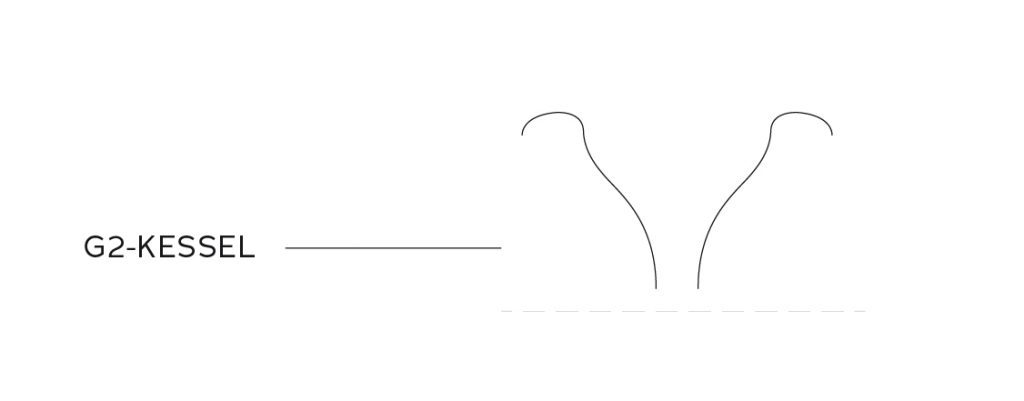
G3-cup: Suitable for talented students as well as for professional musicians. Recommended for brass band and light music.
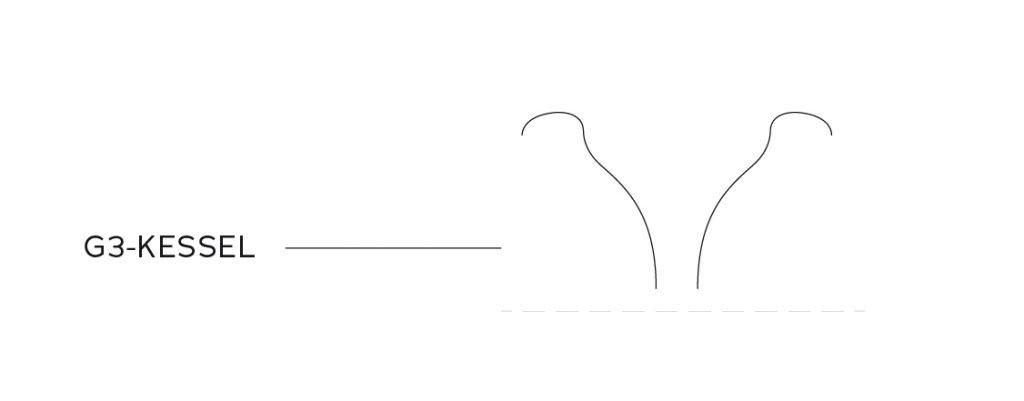
G4 shell: Musicians who have dedicated themselves to modern music will enjoy this model. Smaller bore (3.60mm) in the cup, very shallow, but wide heart so as not to make the sound jingle. Can also be used as a piccolo mouthpiece.
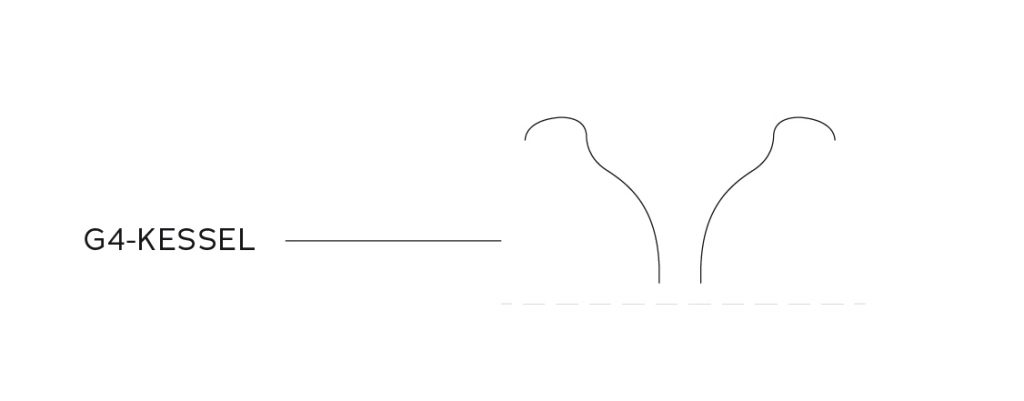
G5 cup: Shallow cup for jazz and big band, with corresponding shank a high quality piccolo mouthpiece.
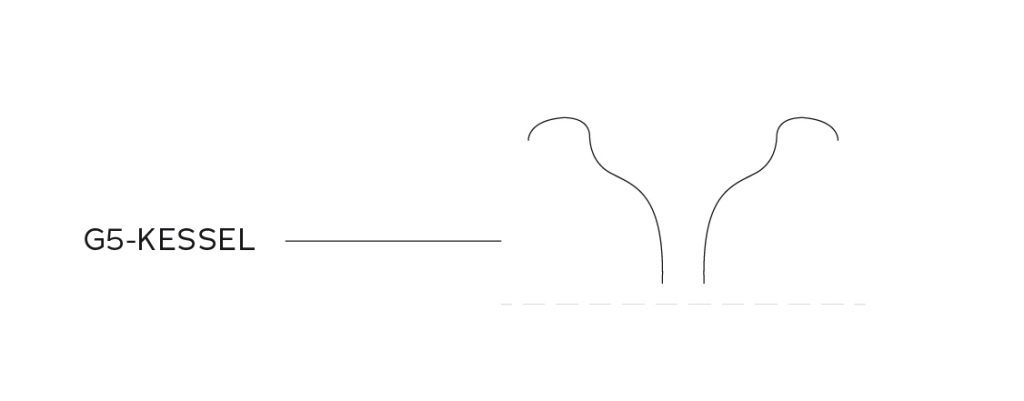
G6 cup: Extremely shallow, flat cup for extreme heights with the corresponding shank bore.
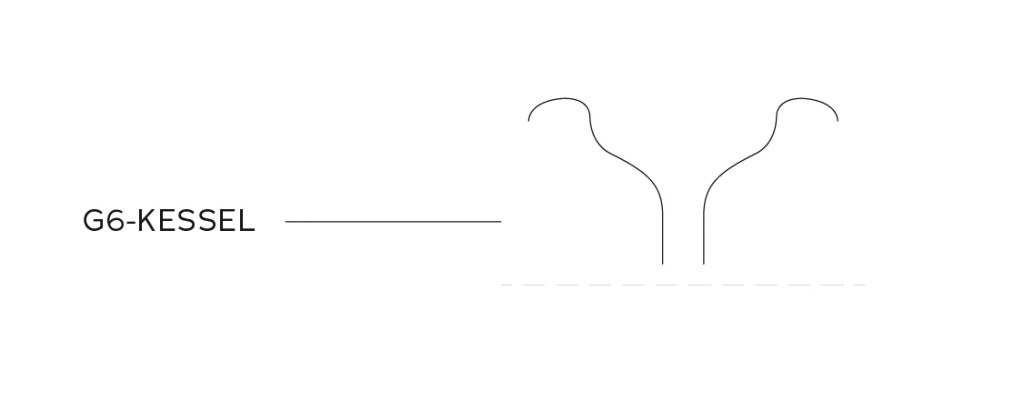
The shank
The shank of a mouthpiece, called the stem, influences the playability of a mouthpiece to a percentage equal to its length percentage.
The musician is rarely aware of the importance of this part. A mouthpiece is conventionally assessed by cup depth and rim width, but a look through the bore gives information at most about the degree of contamination. The shape of the shank bore can hardly be determined with conventional methods. This bore is too narrow and long to be able to look at it. How important this part of the mouthpiece really is could only be seen by introducing the screw shanks.
The mouthpiece functions like a nozzle, the shape of which determines the strength and speed of the air compression in the instrument and the resulting standing wave. Every musician can now choose his optimal tone system with little effort. He should let himself be guided in the choice of the right shank by the ease of tone formation and the desired timbre. Often it will not be possible to realise all ideas in one mouthpiece. However, by using the interchangeable system, a satisfactory result can be found under almost all circumstances.
As the number increases, the shank volume decreases. This means that the number 1 is a bulbous, wide-bored shank, whereas the number 8 is narrow and slender. Large shank give a rich, big sound, but are often sluggish in the high register and difficult to play. Narrow shanks are bright and sharp. The shanks marked with letters are new developments and should further condense and extend the characteristics of the number shanks.
The shank:
- W1: Reproduction of an old Viennese stock. Trombone-like, sonorous sound.
- 1: Bore of the G1 mouthpiece.
- 2: Beautiful, soft tone. Standard bore G2.
- G: Original form of shank 2, similar sound behaviour.
- W2: Shank form W1, with reduced volume.
- L: Guaranteed precise response, centred tone.
- P: Universally applicable orchestral shank, excellent sound.
- 3: Precise response, bright sound, standard G3 bore.
- 4: Well suited for young wind players, still too wide for piccolo.
- 5: Big tone for piccolo, long soul for correct tuning in the high register.
- 6: For wind players who need a deep cup but have little vital capacity.
- S: Easy to play, without significant loss of sound quality.
- B: For jazz and light music, easy to play.
- J: Close dimensioned, bright, sharp tone, good height.
- N: For trumpets with perinet system, good results with piccolo trumpet.
- 7: For jazz and light music, bright, sharp sound.
- 117: Replica of a legendary Bach Corp. shank Mt. Vernon.
- 118: All-round drilling for high demands, lead drilling.
- 8: Extremely narrow shank bore for individualists.
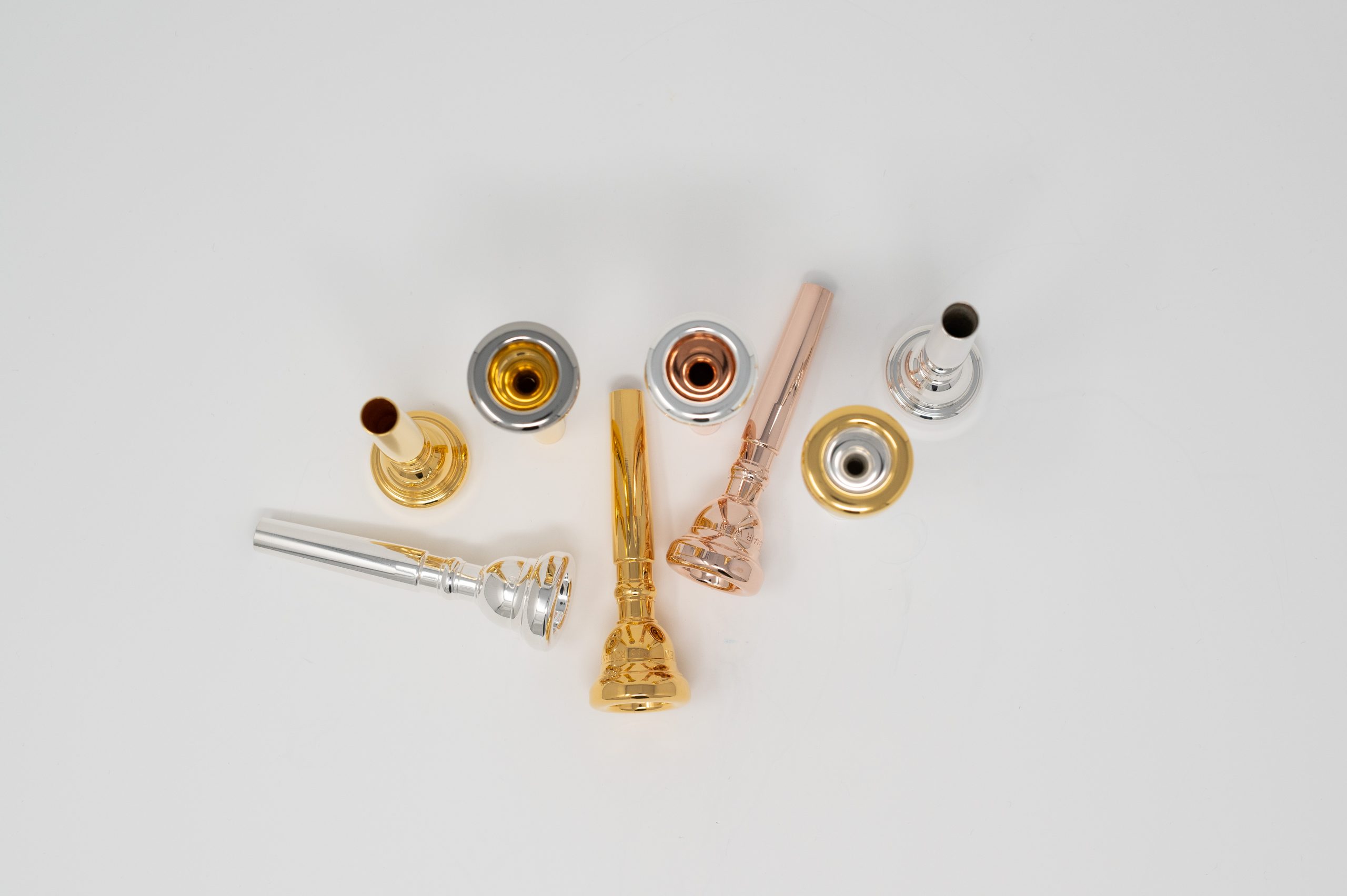

 No products in the shopping cart.
No products in the shopping cart.